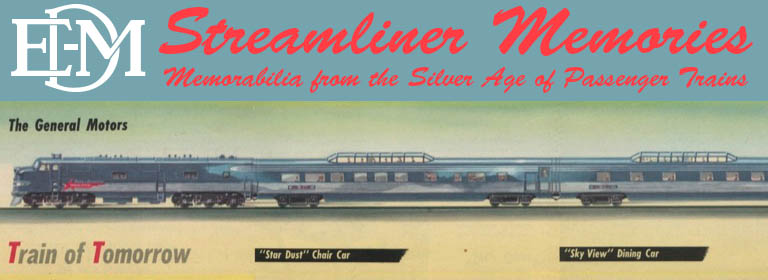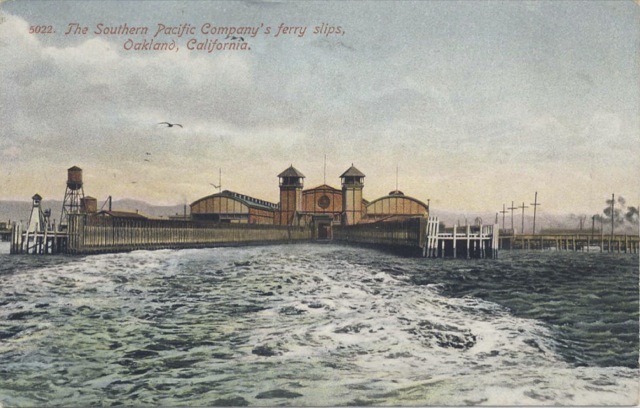Southern Pacific had a line entering San Francisco from the south, but trains from Portland and Ogden terminated at Oakland. While passengers to Oakland and other East Bay communities got off at Oakland’s 16th Street Station, until 1958, passengers to San Francisco took one of Southern Pacific’s ferries from Oakland Pier to the City. The pier was also known as the Oakland Mole, a mole being a “large mass” that was used as a breakwater or pier. (The word has the same root as molecule, which literally means a “tiny mass”).
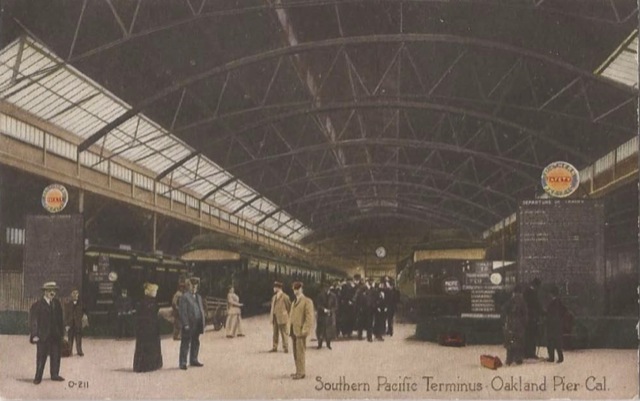
Click image to download a PDF of this postcard.
The above postcard shows the terminal from the ferry end with passengers either waiting to board the ferry or to meet people getting of the ferry. Unfortunately, the postcard is rather dark and dreary–probably like the terminal itself–so the publisher, Pacific Novelty Company, reissued it after substituting light blue for all of the black in the original photo. The revised version (below) certainly is cheerier, but probably not very realistic. That didn’t stop whoever wrote this postcard in 1922 from “having a wild time in Frisco.”
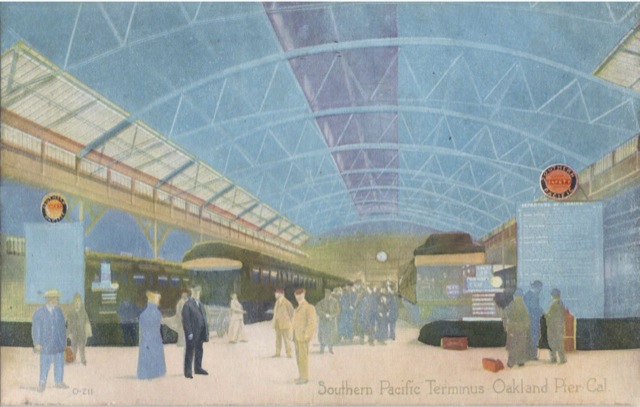
Click image to download a PDF of this postcard.
Here’s one more interior view that’s probably a bit more realistic and–judging by the style of rail cars–a few years older.
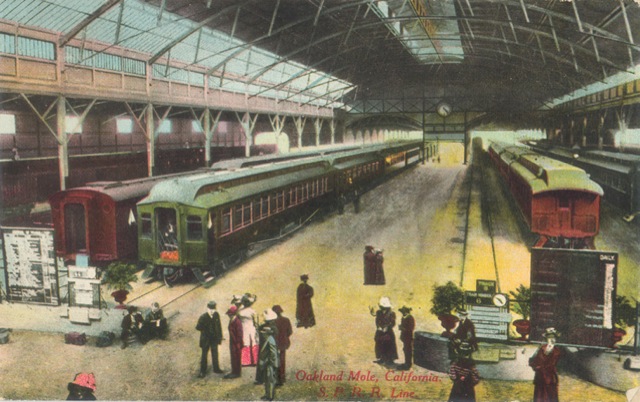
Click image for a larger view.
Here’s a picture of the approach to the terminal from the land side. The card says this is “Southern Pacific’s Broad Gauge Mole.” After 1887, SP also controlled the narrow-gauge South Pacific Coast Railroad, whose tracks ran from Santa Cruz to Alameda, from which it also ran ferries to San Francisco. SP changed it to standard gauge in about 1906. In addition, the California and Nevada Railroad had narrow-gauge tracks ending at a mole a mile or so north of the SP mole. In 1903, Santa Fe acquired control of the C&N and converted it to standard gauge.
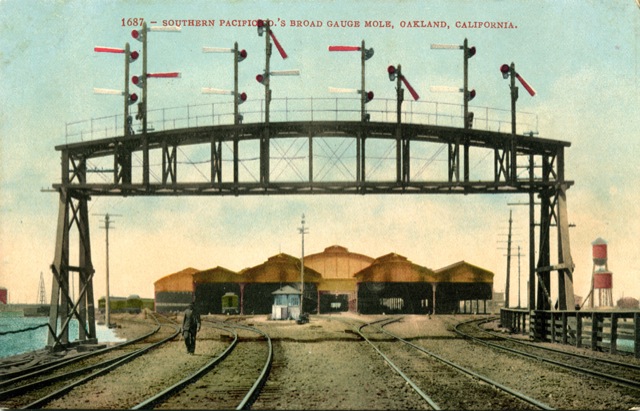
Click image for a larger view.
Below is a picture of the terminal from the ferry side. The passenger terminal was actually just a small part of Southern Pacific’s Long Wharf, with the rest of the wharf being dedicated to freight.
